“Your first indication of their presence is the distant sound of baying hounds. As you look up, you see the sky flecked with tiny white moving shapes, which appear like snowflakes drifting lazily across the azure sky.” naturalist J. B. Grinnell
There are two species of “white” geese in the Valley. The Snow Goose — Anser caerulescens — is the larger and more widespread species compared to its cousin, the Ross’s Goose.
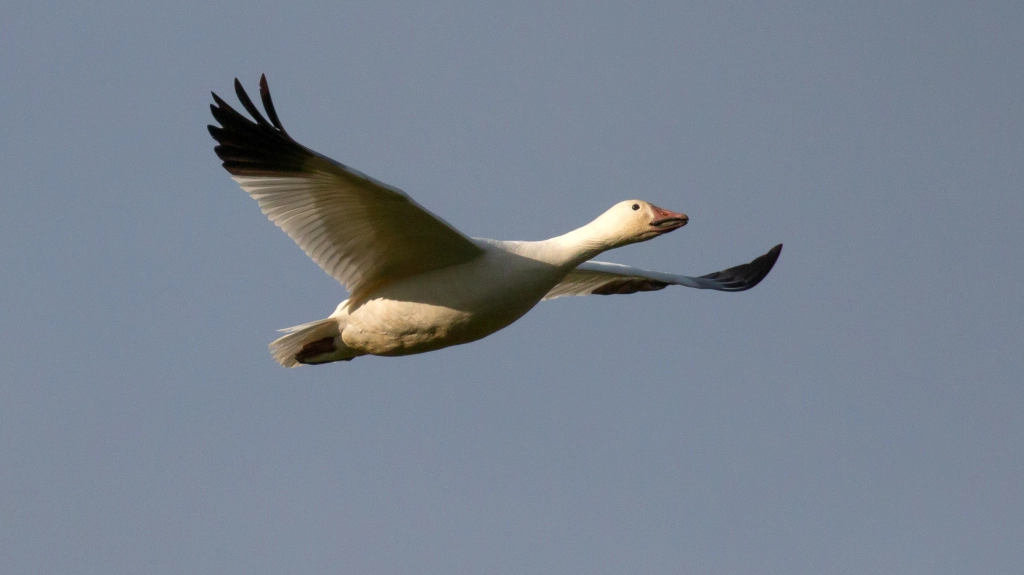
Introduction
The Snow Goose is a Common Winter Visitor found primarily in the Central Valley.
Preferred habitats are fresh emergent wetlands, adjacent lakes and ponds, and nearby wet croplands, pastures, meadows, and grasslands. In the San Joaquin Valley, Snow Geese are common from November to early March, and fairly common in October and April south to Merced Co. They are less common farther south.
Description
This medium-sized goose is distinguished by a blackish “grinning patch” or “smile.” The adult white morph is completely white except for gray primary coverts and black primaries.
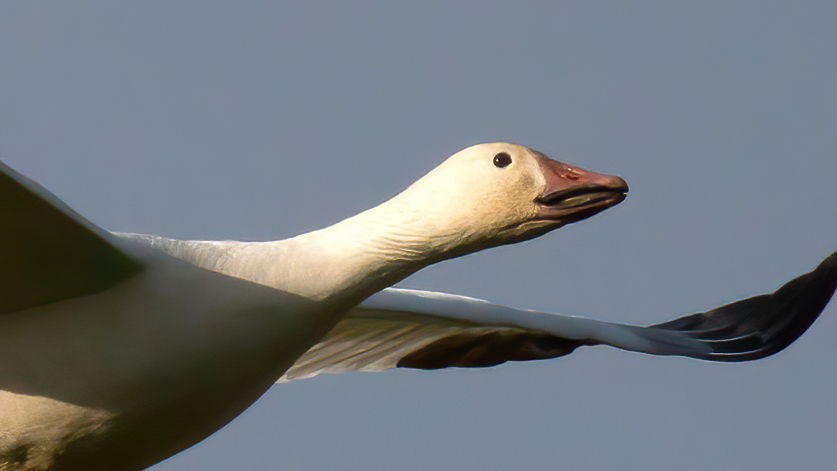
Immatures
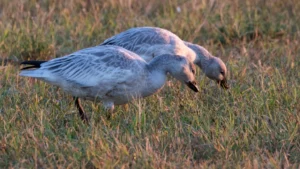
The immature white morph is darker, with grayish and white mixed plumage.
Dimorphic Forms
The species is dimorphic, consisting of light-morph (white) and dark-morph (blue) variations of Snow Geese. Until 1983, the 2 color morphs were considered separate species.
The adult blue morph has the same bill pattern, but its body is largely dark gray-brown except for white head and foreneck. White- and blue-morph birds interbreed and the offspring may be of either morph. These two colors of geese were once thought to be separate species; since they interbreed and are found together throughout their ranges, they are now considered two color phases of the same species.
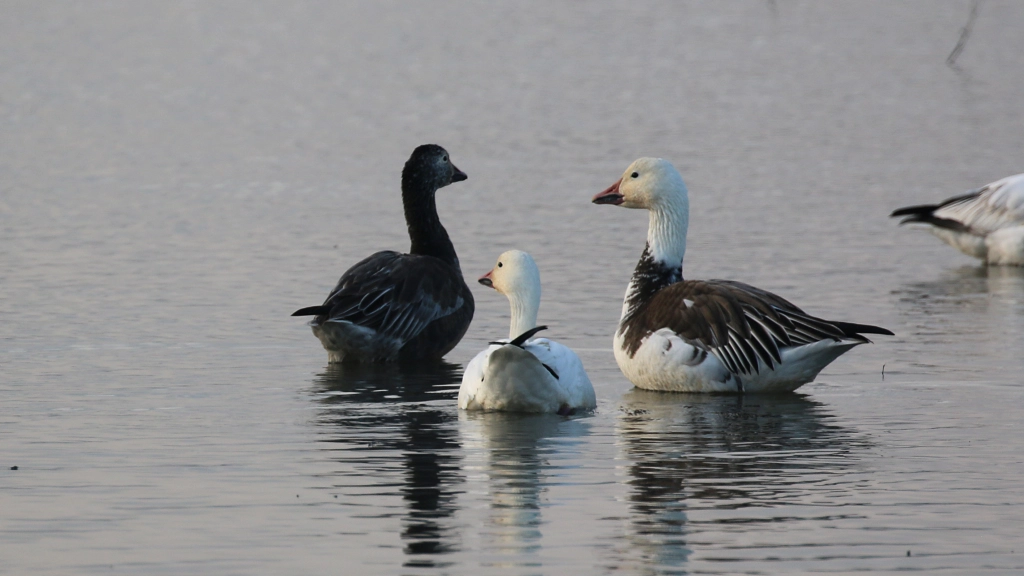
It’s in the Genes
The color phases are genetically controlled. The dark phase results from a single dominant gene and the white phase is homozygous recessive. When choosing a mate, young birds will most often select a mate that resembles their parents’ coloring. If the birds were hatched into a mixed pair, they will mate with either color phase.
Distribution
Snow Geese adapted quickly to use agricultural fields, which is one reason their populations are doing so well. During winter and migration, look for them in plowed cornfields or wetlands. Also check lakes, ponds, and marshes where they roost and bathe along shorelines and in open water.
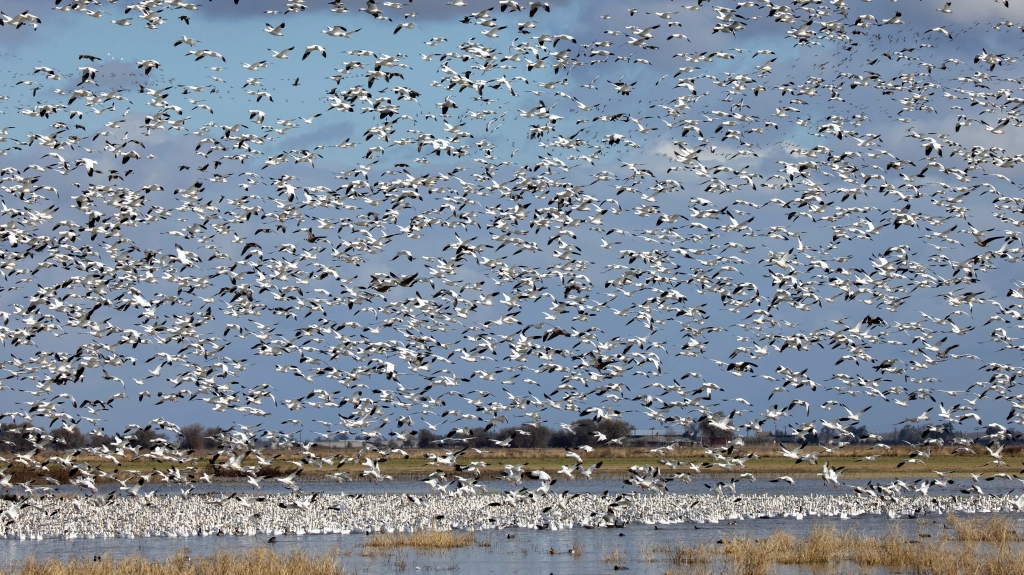
Population Explosion
The breeding population of lesser Snow Geese and Ross’s Geese exceeds 7 million birds, an increase of more than 300% since the mid-1970s. Since the late 1990s, efforts have been underway in the U.S. and Canada to reduce the North American population of lesser snow and Ross’s geese to sustainable levels due to the documented destruction of tundra habitat in Hudson Bay and other nesting areas. The Light Goose Conservation Order was established in 1997 and federally mandated in 1999. Increasing hunter bag limits, extending the length of hunting seasons, and adding new hunting methods have all been successfully implemented, but have not reduced the overall population of snow geese in North America.
Next Post – Our Wintering “White” Geese – Part II: Ross’s Geese
See more of Jim Gain’s excursions into nature at Reflections of the Natural World.

